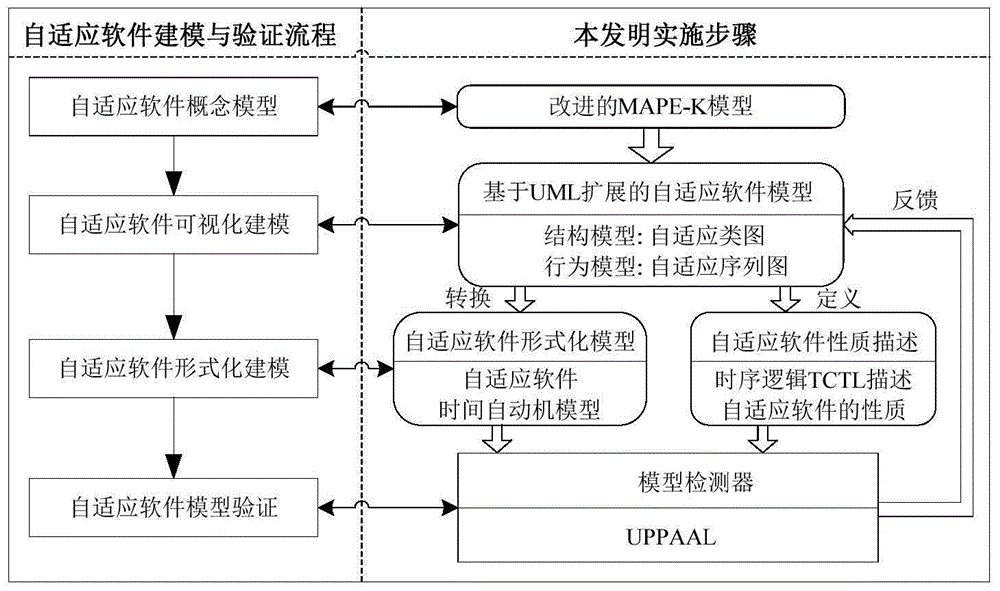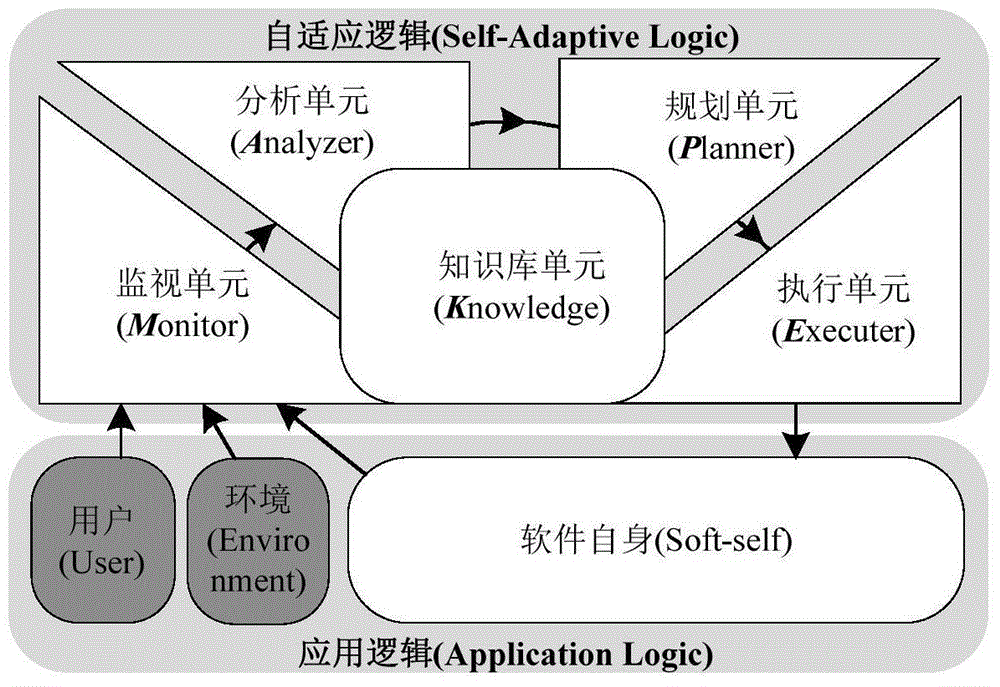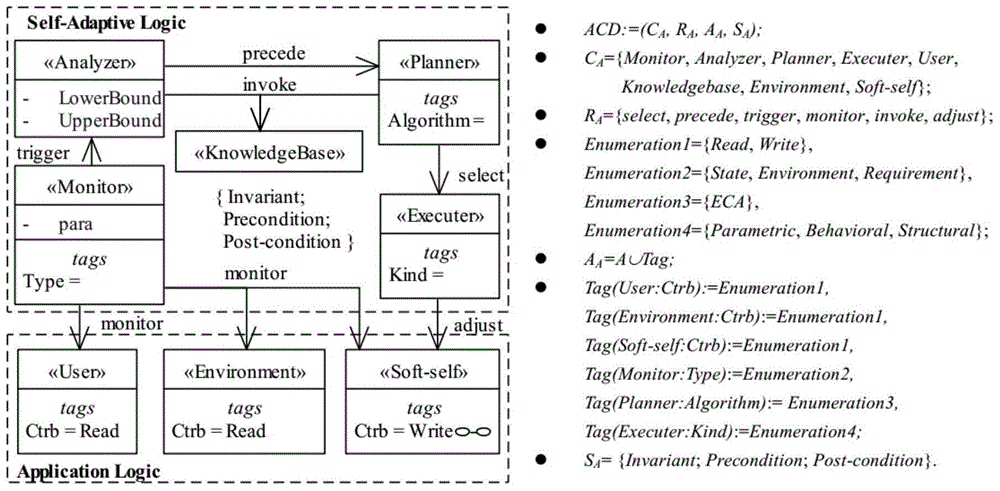Adaptive software UML (unified modeling language) modeling and formal verification method
A formal verification and self-adaptive technology, applied in software testing/debugging, program control devices, etc., can solve the problems of immature research, difficult to understand and master, poor readability, etc., to achieve a high degree of visualization, improve development efficiency, The effect of improving reliability
- Summary
- Abstract
- Description
- Claims
- Application Information
AI Technical Summary
Problems solved by technology
Method used
Image
Examples
Embodiment
[0062] Below in conjunction with embodiment, the present invention is described in further detail:
[0063] Taking a simplified web-based client / server system as an example, the implementation steps of the method of the present invention are described; ZNN.com is a web-based client / server system, and its client is connected with the server pool Server Pool, and system maintenance personnel can Manually add or remove servers according to system load and user requirements, and the client transmits user requirements to the server in real time, providing web services in the form of text (Textual) or multimedia (Multimedia). Due to the dynamic change of client user access, the size of the server pool cannot be adjusted manually to adapt to the frequent changes in the environment. Therefore, software adaptive logic is constructed on the original software system to give the system adaptive capability;
[0064] Step 1. Under the guidance of the improved MAPE-K software self-adap...
PUM
 Login to View More
Login to View More Abstract
Description
Claims
Application Information
 Login to View More
Login to View More - R&D Engineer
- R&D Manager
- IP Professional
- Industry Leading Data Capabilities
- Powerful AI technology
- Patent DNA Extraction
Browse by: Latest US Patents, China's latest patents, Technical Efficacy Thesaurus, Application Domain, Technology Topic, Popular Technical Reports.
© 2024 PatSnap. All rights reserved.Legal|Privacy policy|Modern Slavery Act Transparency Statement|Sitemap|About US| Contact US: help@patsnap.com










